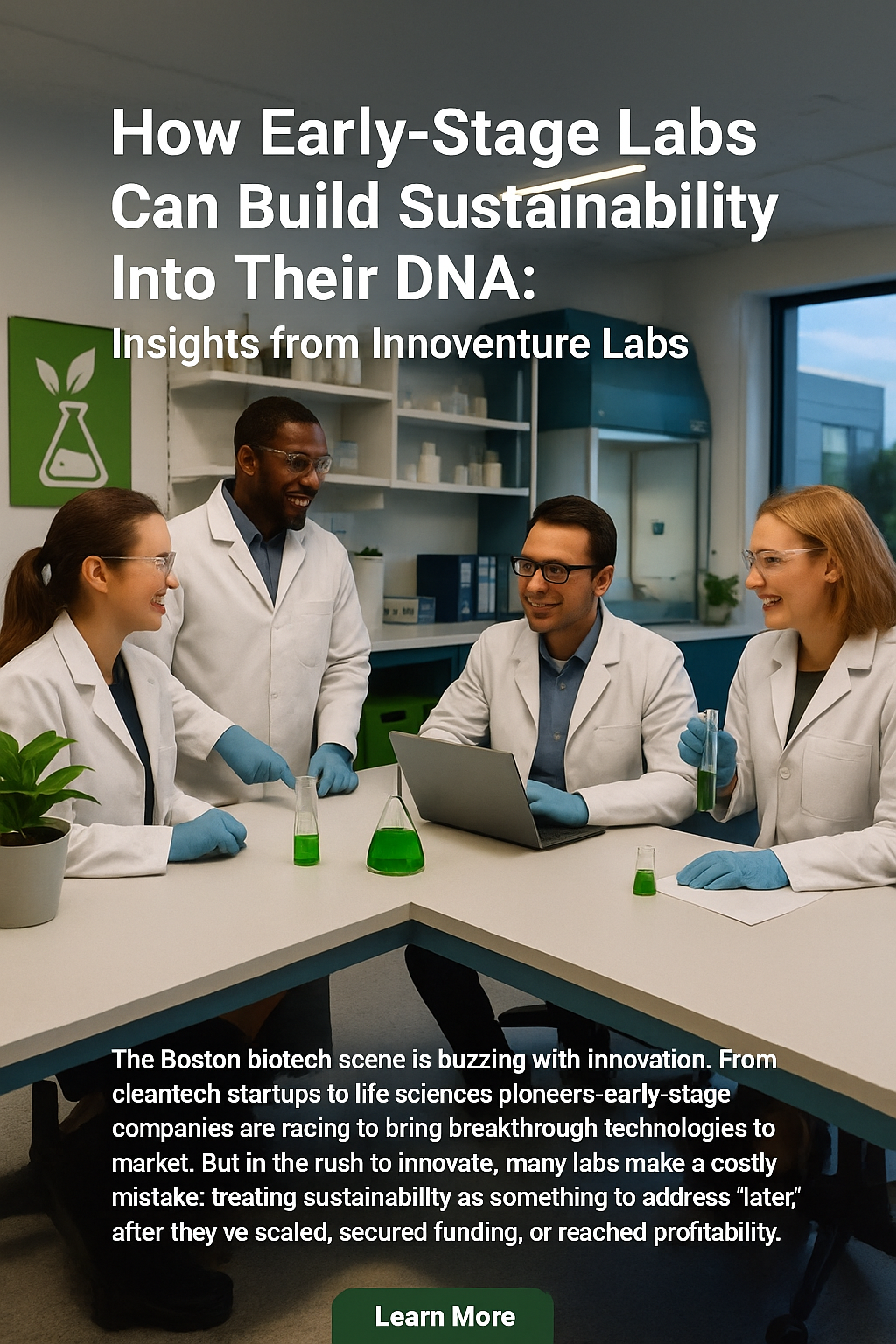Splash Less, Save More: Smart Water Conservation in Labs
Splash Less, Save More: Smart Water Conservation in Labs

Labs are water guzzlers. They use five times more water than standard office buildings.
This high water consumption presents both a challenge and an opportunity for sustainability efforts. By implementing smart conservation techniques, labs can reduce their water use without compromising research quality.
Faucet Aerators: A Simple Start
One of the easiest ways to conserve water in labs is by installing aerators on faucets. These small devices limit water flow while maintaining pressure. The benefits of faucet aerators include:
- Immediate reduction in water waste
- Low cost and easy installation
- No negative impact on lab processes
Autoclave Optimization: Timing is Everything
Autoclaves use steam to sterilize lab equipment. They're essential but incredibly wasteful when used carelessly.
To use autoclaves more efficiently:
- Run full loads whenever possible
- Operate during off-peak hours to save on energy costs
- Choose the appropriate cycle for each load
Running autoclaves at night saves energy and money. Most utility companies charge less for electricity used outside peak hours.
By following these practices, labs can significantly reduce both water and energy consumption associated with autoclave use.
Water Baths and Equipment: The Hidden Culprits
It's not just about direct water use. Many labs process wastewater indirectly through inefficient equipment operation.
Water baths, for example, often run constantly. But do they need to? Review your protocols. Can you use timers to shut off equipment when not in use?
Consider these steps to improve equipment efficiency:
- Use timers to automatically shut off equipment when not in use
- Regularly maintain and upgrade equipment for optimal performance
- Train staff on efficient equipment operation practices
Cold Storage: The Energy Vampire
Ultra-low temperature freezers are lab essentials. They're also energy hogs. A single unit uses as much power as a typical house over a year.
Small tweaks yield big savings:
- Raise the temperature: Many samples are fine at -70°C instead of -80°C. This 10-degree difference cuts energy use by 20%.
- Upgrade old units: New Energy Star freezers use 60-70% less power. Many utility companies offer rebates for upgrades.
- Optimize settings: Some newer freezers can run at -20°C for less critical samples.
One lab replaced 1,500 old freezers with efficient models. The result? They saved 50 tons of carbon emissions.
Plastic Waste: From Pipette to Park Bench
Labs generate mountains of plastic waste. Much of it ends up incinerated or in landfills.
"Plastic circularity" is very important. Companies like Polycarbon and Recycling Labs turn used pipettes into new lab equipment.
Here are some strategies to address this issue:
- Implement a robust recycling program for non-contaminated plastics
- Explore options for reusable lab equipment where possible
- Consider alternative materials, such as bioplastics, for certain applications
Even better? Some companies now offer non-fossil fuel based plastics for lab use.
Green Chemistry: Less is More
Green chemistry isn't just a buzzword. It's about using fewer, less toxic chemicals to achieve the same results.
Start by inventorying your chemicals. Ask:
- Can we use less?
- Is there a less toxic alternative?
- Can we share resources with other labs?
Green chemistry often leads to safer, more efficient processes. It's a win for science and the planet.
Overcoming Resistance to Change
Change is hard, especially in labs where precise protocols are sacred. Many researchers fear sustainability measures will compromise their results.
The truth? Most conservation techniques don't affect scientific outcomes at all.
To address these concerns:
- Start with small, low-risk changes and measure their impact.
- Provide clear education on how sustainability measures align with research goals.
- Engage staff in the process of identifying and implementing conservation strategies.
The biggest hurdle is often mindset. Researchers trained to do things a certain way may resist change. The key is education and showing how small tweaks can make a big difference.
The Future of Lab Sustainability
As technology advances, new opportunities for lab sustainability continue to emerge. Some promising developments include:
- More efficient autoclave designs •
- Advanced waste processing techniques
- Improved sharing of resources between labs
These innovations promise to further reduce the environmental impact of laboratory operations in the coming years.
The Why Behind the How
Lab sustainability isn't just about saving money or looking good. It's about preserving the planet we're trying to understand and protect through research.
As one sustainability expert put it: "I do this because of my three grandsons. We need to save the planet."
Every beaker filled, every pipette used, every freezer running has an impact. By making our labs more efficient, we're not just saving resources – we're aligning our methods with our mission.
Take Action Today
- Install faucet aerators
- Optimize your autoclave use
- Review cold storage practices
- Implement a robust recycling program
- Inventory your chemicals and look for greener alternatives
You don't have to overhaul everything at once. Start small, measure your impact, and build from there.
In the end, a sustainable lab is a better lab – for researchers, for science, and for the world we're all working to improve.
.jpg)

